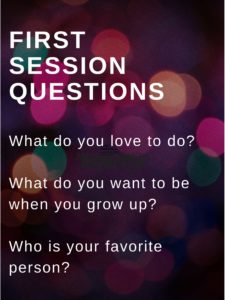What’s missing?
I think have figured out the secret to better speech-language therapy, and I learned it 15 years into my career. A year ago, I sat in an audience and listened to Stacey Chang, the Executive Director of the Design Institute for Health, a collaboration between the Dell Medical School and the College of Fine Arts at the University of Texas at Austin. This is a first-of-its-kind program dedicated to solving systemic challenges in health care.
Here’s the thing. In the United States, 1) we have the highest per capita health spending, 2) we spend less than 9% toward disease prevention and 3) we lag behind in many health indicators. So, where do we need to make changes? Stacey talked about an 80/20 human breakdown. Typically, as medical professionals, we concentrate on the 20% that relates to illness/disorders when we should be concentrating on the 80% that keeps a human well. He speaks of the impact of the social determinants in healthcare, and it’s valuable. You can read this here: Health-Policy-Brief-on-Social-Determinants.pdf (1063 downloads )
Social Determinants
How does this relate to our field of communicative disorders, SLPs? For me, it’s the foundation of our human work. We serve human beings, and we need to consider the value of efforts dedicated to our students’ and clients’ overall and comprehensive well-being—not just the areas focused on disorders and gaps in performance. Our undergraduate education, graduate education, practicum experiences, internships and IEP meetings are inherently designed to focus on the disorder. But remember, communication is only one part of a client/student. There is also environment, daily stressors, availability of resources, personal likes/dislikes, personal motivators, temperament and much more.
Today we are going to focus on social determinants (e.g., stress, socioeconomic status). Stacey says that talk of social determinants in healthcare is a decades-old research question, and we are converging towards consensus. So, SLPs, it’s time to widen our scope on how to support communication goals, and it means focusing on the entire person. Here is a video on Growing Students’/Clients’ Self-Confidence. Be a member of our SLP Impact community for more tools like this.
3 Tips for Speech-Language Therapy

- Acknowledge and understand the stressors your student/client may have on a daily basis. This means having conversations with students, clients and families. This “looks like” having a face-to-face conversation or phone conversation. It “sounds like” saying, “How are you doing?” and sincerely listening for an answer. Through this small gesture (that yields big outcomes), I have found out that a student’s parents were divorcing, a student’s mother was dying and a mother had no access to phone and transportation. This information is not directly related to speech-language pathology, but know it supports our endeavors as SLPs.
- Determine what your student/client likes and his/her superpowers (and we all have them). This “looks like” asking parents what their child likes prior to the assessment and leading with that knowledge. It means asking your group of 4 students what he/she wants to be when he grows up. If it’s being a Pokémon, then you best learn about Pikachu and Eevee. If it’s becoming a WNBA star, then you reach out to her favorite player Brittney Griner for a FaceTime session. We all like to talk about our personal interests, and as speech-language pathologists, we have the privilege of incorporating personalized themes into our sessions—because communication is FUNctional.
- It’s building trust and rapport alongside teaching the strategies for communication. Dr. Jeffrey Duncan-Andrade, a high school teacher in East Oakland and Associate Professor at San Francisco State University, conducts research and work in building self-confidence, esteem, and academic success for students. His school, Roses from Concrete, prioritizes student relationships, and Dr. Duncan-Andrade explicitly states that learning occurs when relationships are built. In essence, we get to the head (the speech-language learning) by going through the heart (SLP-client/student relationship). This is even more valuable for our students from diverse backgrounds.
These three strategies can make a valuable difference. Also, with consideration to supporting our most vulnerable students and children from diverse backgrounds, this would as essential as implementing our speech and language interventions. So, SLPs, here’s to comprehensive human care, compassion and our collective efforts.




